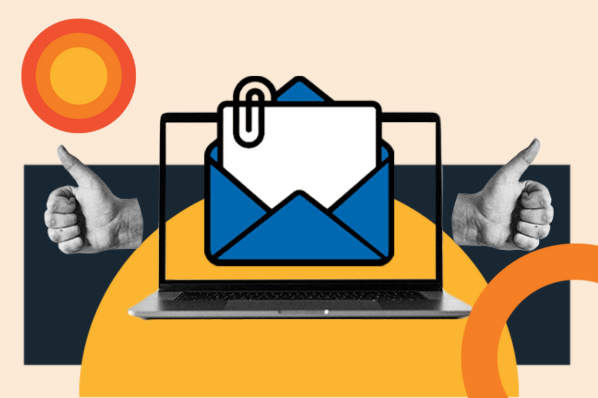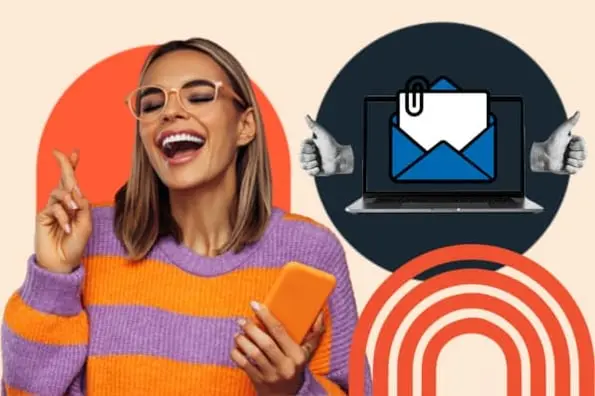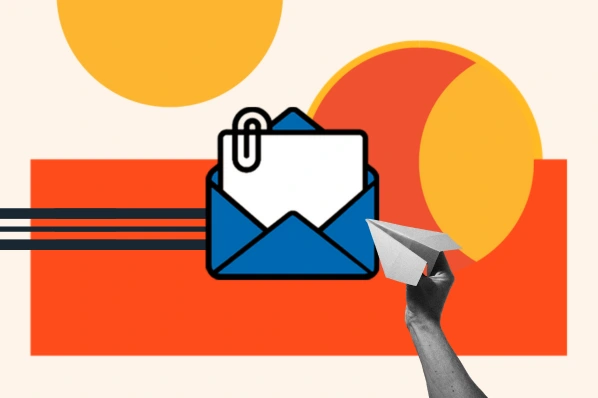When you work in marketing, establishing partnerships and building meaningful relationships with influencers comes with the territory.
At CreativeLive, I'm constantly seeking out new business leaders to introduce to our audience. For me, this translates into a high volume of emails to people who are extremely busy.
Over the past couple of years, I’ve perfected my email approach and have had the privilege of opening up doors with people like Rand Fishkin, Tim Ferriss, Brian Dean, and more.
However, it didn't happen overnight. In fact, it wasn't until I had my own active blog and community of people reaching out to ask for help that I realized how poorly some of my emails must have come across.
After hundreds of emails and countless hours of real-world practice, here are my top ten tips for emailing -- and getting a reply from -- really busy people.
10 Tips for Emailing Really Busy People
1) Research them.
Don’t make assumptions about the person you're emailing. Instead, take time to research who they are, what they care about, any organizations or interests you have in common, and what they do for fun outside of work. This type of careful research will afford you many more opportunities to build a connection with them -- a connection that'll get you noticed in a crowded inbox.
Peruse what they share and how they speak on Twitter, LinkedIn, Instagram, on their personal blog, and within articles they’ve written elsewhere online. Then, use this information to craft a more meaningful email content.
2) Perfect the subject line.
Don’t over-think this one. Simplicity wins every time when it comes to reach out subject lines. Avoid potentially spammy or misleading subject lines like, “5 Reasons Why You’ll Want to Read This Post” or “The Best Decision You’ll Make Today.” There’s no quicker way to make sure your emails will never be replied to, than to make your recipient feel like they’ve been tricked into opening them.
Use a subject line that instills curiosity, makes an instant connection, or clearly provides value to your recipient. Here are a few of the subject lines that have worked best for me when reaching out to promote a recent blog post or land a high value guest feature:
- “[Company Name] feature in my post”
- “Your article on [subject of their post that I linked to]”
- “A mutual love for puppies and a quick question”
When crafting the perfect subject line, much of your success will come down to how well you can form an understanding of what motivates your recipient. This is where that research you did in tip #1 comes in. If you pick up something personal, like the fact that they regularly share pictures of their dog on social media, then find a way to incorporate that into your subject line.
If you can genuinely put a smile on someone’s face through your email, you’ve already won half of the battle.
3) Establish relevance.
If your busy recipient isn’t 100% relevant to what you’re reaching out about, pause and reconsider whether you should actually be sending them a message. In order to get them interested in what you have to say, it’s your job to clearly articulate why you’re reaching out in the first place.
If you’re emailing an influencer within your industry to ask for a quote for an upcoming blog post, quickly transition the opening of your email into answering why they’d want to participate. What unique value are they going to add to your project, that’ll compel them to proactively get involved? Use a phrase like, “I really admired your recent post on [enter topic here], and I’m working on a similar project that would greatly benefit from your quick input. Would you be up for answering just one short question for my upcoming piece?”
4) Identify and build a connection.
When seeking to build a connection with someone new, your natural goal is to make them care about you, and want to proactively help what you’re doing. The best way to get someone to care about you is to show them that you clearly care about them first. While the adage of "respect must be earned"has been debated time and time again, it goes without saying that the quickest way to win someone over is by first showing them how much you’re invested in the relationship.
Take note during your research of any uncommon commonalities that’ll give you great talking points with which to start building a connection. This could come in the form of belonging to the same fraternity or sorority, an intersection of professional society memberships, the fact that you attended the same marketing conference, or perhaps a mutual friend. Even something as simple as a shared mutual interest has gone a long way in helping me start a meaningful dialogue.
5) Make them like you.
This may seem like an obvious one, but if your goal is to get someone who you don't have a strong connection with to take action on your behalf, you’re going to need them to like you. Place yourself in their shoes and imagine the sheer number of superficial requests and demands that are constantly placed on their time. How do you stand a chance of making an impact if they don’t at least admire your approach?
Beyond just building a connection on common ground, I always make sure my reach out emails include an insightful note about a recent project they’ve done. Showing that you care beyond just a quick favor will make a big difference. This all comes back to a core principle in mastering your people skills that I learned from behavioral investigator, Vanessa Van Edwards.
Speaking of people skills, expressing empathy is another effective way to be more likeable over email. Show that you understand how busy they are by adding in a friendly line about how much you'd appreciate a moment of their time. Demonstrating this type of understanding will help you build a stronger connection.
Want more tips on how to be more likable? Check out this helpful post.
6) Inspire reciprocity.
Before you hit send on your email, pause and reflect on exactly how you’re providing value to them, first. If you’re asking for a favor, reaching out with a business opportunity, or seeking to build a long-term relationship, you’ll need to start out by doing something meaningful for them.
"People will help if they owe you for something you did in the past to advance their goals. That’s the rule of reciprocity,"explains Dr. Robert Cialdini.
Think of this as working backwards to achieve your desired end result. If you’re asking them to share an amazing blog post you wrote, how can you increase the likelihood of them actually responding and sharing? To motivate them, try linking to a relevant piece of their content, featuring a tweetable quote from them, or mentioning them as a source of inspiration within your post. By reaching out and letting them know what you've done for them, you'll significantly increase your chances of them wanting to share your post.
7) Convey your authority.
We tend to gravitate toward authoritative figures -- it’s simple human nature. It explains why your podcast interview with Tim Ferriss significantly outperformed your episode without any guests at all. It’s the reason why marketers like Neil Patel can land consulting gigs with Google and Amazon, while the majority of other freelance marketers looking to work with name brands get turned away.
Naturally, you don’t want to lead your email by gloating about yourself, but your accomplishments -- and the authority that comes with them -- will be of great use in opening a line of communication. If you plan to publish the post you’re requesting a quote for on a respected website such as Entrepreneur, be sure to mention that. If you’re a contributor to any major publications or industry blogs, include that in your email signature. If you have an active social following, or website that showcases your work, include those links in your email signature as well.
8) Use an appropriate voice and tone.
The same principle of speaking to your audience the way they want to be spoken to, applies with emailing busy people. Write your email in a tone that will resonate with your recipient. This can be difficult without having already formed a relationship, but reviewing the voice and tone they use on their social platforms and within their writing, should give you some helpful insights.
Should you use emojis? Do you refrain from exclamation points? How about using profanity? When used in the right setting, all of these can actually serve to better connect you with your recipient. However, a misjudgment on the delivery of your email will likely result in a guaranteed deletion. I recommend staying away from any extremes in your first emails, while slightly adapting your verbiage to match their communication style.
9) Include a very specific ask.
When I reach out to brands and influencers, I’m always careful to make very clear, exactly what I’m asking for. Assuming you’ve already established relevance and laid the foundation for a connection with your recipient, keep in mind that someone who’s extremely strapped for time doesn’t want to spend more of their precious time trying to determine the point of your email.
For example, when collecting insights for my post on side businesses, I was tasked with emailing marketers at companies like Treehouse, General Assembly, and Etsy. To encourage a response, I made sure that my ask was made known through a very clear, standalone sentence.
Here’s what I start with: “When you have the chance to check out the post, could you make sure I’m citing you properly and linking to the best possible destination?” This gets them engaged in a more genuine way than asking outright if they’ll tweet my article. Once they get back and confirm, or I make any updates, I’ll ask if they think the post would be a good fit to share with their audience. Since I already have them engaged and they’ll feel like they’ve participated in my post, the chances of them championing my article through to their social team go up significantly.
10) Show your appreciation.
Amongst the least successful reach out emails I’ve received from people seeking business advice on my website, are the ones that say things like, “I’ll be waiting for your reply,” and “I’m looking forward to your prompt advice.” It’s not that I’m unwilling to help, rather that I don’t feel they’ll truly appreciate any of the time I do take out of my day to offer thoughtful insights. I get excited to help when I feel like I could possibly make a difference, not when I feel that I’m being strong-armed into abiding by someone’s demand for my time.
Use this principle within your own reach out emails to guide the direction of your request. There's a huge difference in perception that can be created by including a quick note expressing how thankful you are for their time.
Do you have any tips that help you reach busy people over email? I’d love to hear, please share with me in the comments.




![30 Brilliant Marketing Email Campaign Examples [+ Template]](https://www.hubspot.com/hubfs/email-marketing-examples_29.webp)

![How to Write a Marketing Email: 28 Tips for Writing Compelling Email Copy [+ HubSpotter Insights]](https://www.hubspot.com/hubfs/Untitled%20design%20%2840%29.jpg)
![16 Great Examples of Welcome Emails for New Customers [Templates]](https://53.fs1.hubspotusercontent-na1.net/hubfs/53/36_Welcome%20Email%20Templates.jpg)




